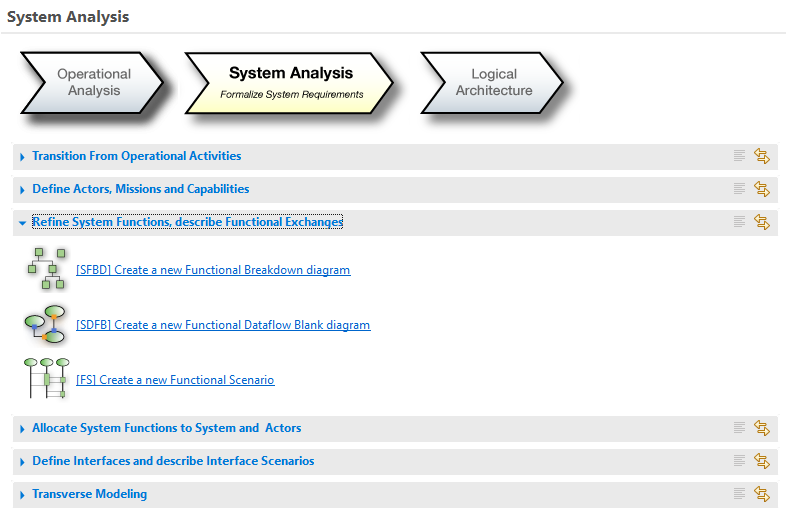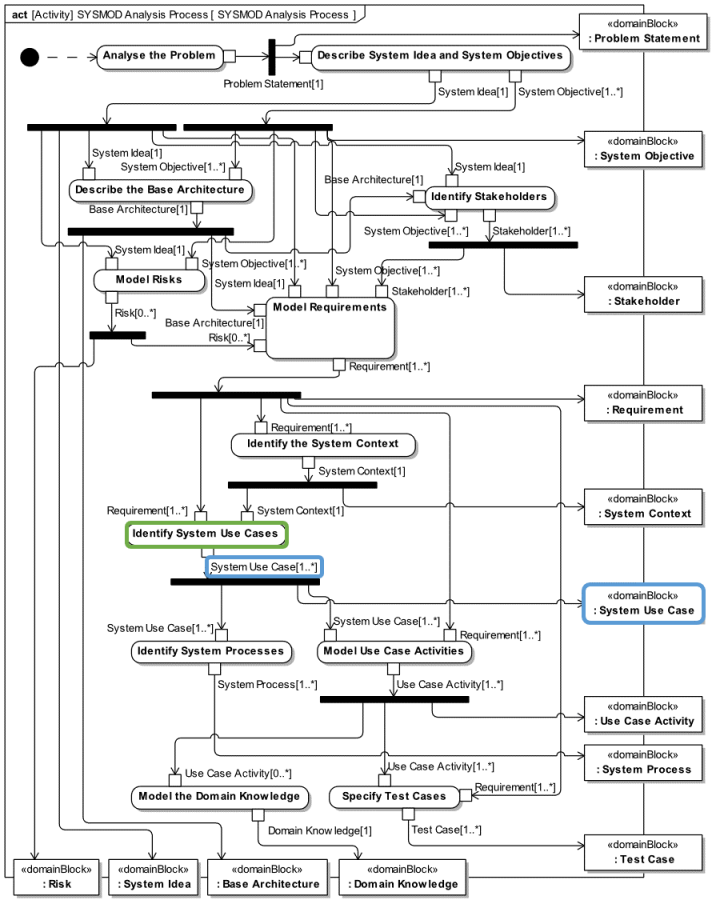Part II - Process & Diagrams
A very warm welcome to the 2nd part of "What the user needs - Comparing System Analysis with Arcadia or SYSMOD". In the last blog-post we took a deeper look into the modeling concepts of both methodologies. Today’s topic will be about the process and the diagrams that are applied.
1. Introduction
First some short theory and definition:
- The process is all about the tasks that need to be performed.
- The diagrams show the output of one or several process steps. They are one potential view of the process output.
Arcadia and SYSMOD both define a process and related diagrams. In this blog-post we will compare the System Analysis process of the methodologies with main focus on mapping SYSMOD onto Arcadia. (For the file click here. For more information don't forget to check the parts below.)
2. Overview
Capella provides the Activity Browser to guide through the Arcadia System Analysis process. Each step uses a distinct set of diagrams.

Source: Capella Activity Browser Process Overview
The picture shows the Refine System Functions, describe Functional Exchange process step and the set of diagrams that can be used, the Functional Breakdown, Dataflow and Scenario diagrams.
The SYSMOD Analysis Process describes the order of SYSMOD Methods. Each method produces outputs, the so called SYSMOD Products. The products can be created, e.g. by using SysML and they can be represented in diagrams.

Source: SYSMOD Analysis Process
Highlighted in green you can see the SYSMOD Method Identify System Use Cases. The output of the method are the System Use Case(s) highlighted in blue. They can be captured in different ways, e.g. Use Case diagrams or in textual form. Similar to the domain knowledge of the system (e.g. specific data and values types), the System Use Case is the domain knowledge of SYSMOD. This explains why the System Use Case is a domain block and output of the aforementioned method.
At first glance both Arcadia and SYSMOD appear to be ordered for linear execution. But depending on the specific project requirements the steps can and should be applied as needed. (No, I won't start a discussion about waterfall vs. agile ;)
3. Comparison
You can find the file containing the comparison here (For higher resolution you can contact me and I'll send you the original file. But also see mbse4u.com, the SYSMOD Book and the Capella IFE Example).
I also updated the format of the concept comparison of blog-post part I (see here).
In the next and last part we will have a general overview and conclusion about using Arcadia and SYSMOD.
Sources:
Badache & Roques (2018), CapellaSysMLBridge
Capella Tool, https://www.eclipse.org/capella/
Roques (2016), MBSE with the ARCADIA Method and the Capella Tool
OMG (2019), SysML Spezifikation
Voiron (2018), Model-based System and Architecture Engineering with the Arcadia Method
Weilkiens (2020), SYSMOD - The Systems Modeling Toolbox